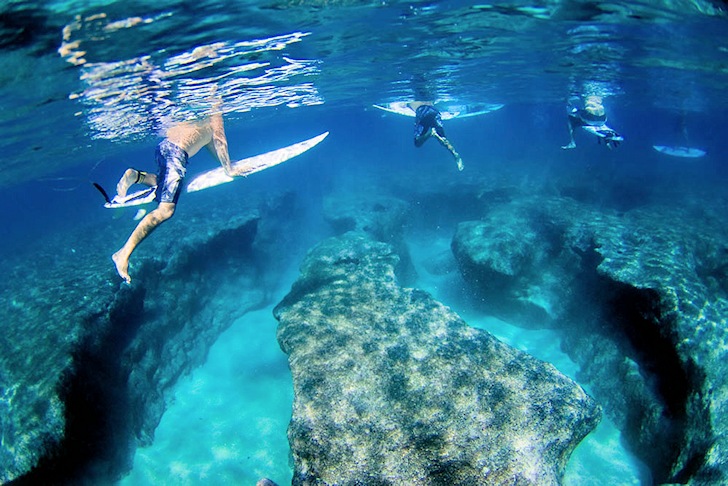Pipeline is a fast barreling wave, but what exactly lies below? How shallow are the Banzai Pipeline waters? Let's dive and explore the most famous Hawaiian reef.
Swell refraction is greatly responsible for the miracle of Pipeline. Oahu's most perfect surf spot is a complex oceanic system with three main reefs.
These underwater reefs have been baptized First Reef, Second Reef, and Third Reef. The most popular take-off peak is the First Reef, the closest to the shore.
The speedy cylinders break only a few feet above the underwater obstacles. On the inside area, your duck dives are performed in two-to-five feet of salt water, depending on tide and swell.
Pipeline's biggest problem - and most exciting challenge- is the take-off moment.
Avoid Wiping Out
Wipeouts can be dangerous in the early seconds of the ride because you can easily hit the reef if you go over the falls. Fifteen yards later, there's sand to soften your bones.
The treacherous Pipe reef is primarily made of lava rock. It's a blend of volcanic sediments and recently formed coral. When waves move rapidly from deep to shallow waters, a perfect barrel is born.
Nature may, however, change your tube riding plans. Occasionally, double-up suck-outs will terminate your adventure if there's too much sand on the reef.
Pipe's flat tabletop reef also hides several caverns that hold air bubbles. When the wave breaks, you can hear small underwater "explosions."
By the way, close-outs are frequent and should definitely be anticipated.
Although the Pipeline reef isn't razor-sharp, try to land feet first or curl up in a ball if you feel you're not going to make it. It might save your life.
